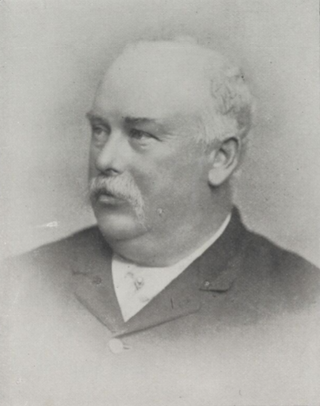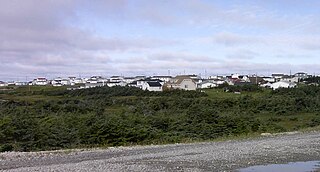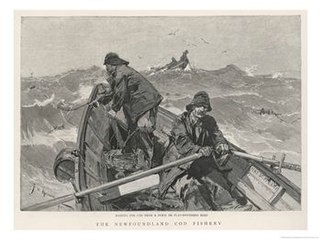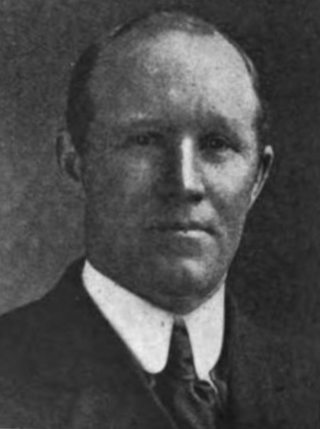
The Grand Banks of Newfoundland are a series of underwater plateaus south-east of the island of Newfoundland on the North American continental shelf. The Grand Banks are one of the world's richest fishing grounds, supporting Atlantic cod, swordfish, haddock and capelin, as well as shellfish, seabirds and sea mammals.

An outport is the term given for a small coastal community in the Canadian province of Newfoundland and Labrador other than the chief port of St. John's. Originally, the term was used for coastal communities on the island of Newfoundland, but the term has now been adopted for those on the mainland area of Labrador as well.

The Turbot War was an international fishing dispute and bloodless conflict between Canada and Spain and their respective supporters.

Charles Rennie Bowring was a merchant and politician born in St. John's, Newfoundland.
The Burin Peninsula is a peninsula located on the south coast of the island of Newfoundland in the province of Newfoundland and Labrador. Marystown is the largest population centre on the peninsula.

Anchor Point is a town located in St. Barbe Bay, south of Flower's Cove on the west side of the Great Northern Peninsula, in Newfoundland and Labrador, Canada. It was the first English settlement on what is called the 'French Shore' of Newfoundland.

Dried and salted cod, sometimes referred to as salt cod or saltfish or salt dolly, is cod which has been preserved by drying after salting. Cod which has been dried without the addition of salt is stockfish. Salt cod was long a major export of the North Atlantic region, and has become an ingredient of many cuisines around the Atlantic and in the Mediterranean.

The province of Newfoundland and Labrador covers the period from habitation by Archaic peoples thousands of years ago to the present day.
Bay de Verde is an incorporated town in Conception Bay on the northern tip of the Bay de Verde Peninsula of Newfoundland and Labrador, Canada. The first recorded inhabitants at Bay de Verde arrived in 1662. Bay de Verde became an incorporated town in 1950.
Swain's Island, Newfoundland, is actually a group of eight islands on the north side of Bonavista Bay, southeast of Wesleyville. All of these islands once had inhabitants but eventually all of them were resettled, mostly to Wesleyville.
Savage Cove is a community located on the Great Northern Peninsula, north of Flower's Cove on the coast of the Strait of Belle Isle. Savage Cove is the most northerly sheltered harbour in the straits on the island of Newfoundland. In 1996, Savage Cove and nearby Sandy Cove were officially consolidated into the Town of Savage Cove - Sandy Cove.

Cod fishing in Newfoundland was carried out at a subsistence level for centuries, but large scale fishing began shortly after the European arrival in the North American continent in 1492, with the waters being found to be preternaturally plentiful, and ended after intense overfishing with the collapse of the fisheries in 1992.

In 1992, Northern Cod populations fell to 1% of historical levels, due in large part to decades of overfishing. The Canadian Federal Minister of Fisheries and Oceans, John Crosbie, declared a moratorium on the Northern Cod fishery, which for the preceding 500 years had primarily shaped the lives and communities of Canada's eastern coast. A significant factor contributing to the depletion of the cod stocks off Newfoundland's shores was the introduction of equipment and technology that increased landed fish volume. From the 1950s onwards, new technology allowed fishers to trawl a larger area, fish more in-depth, and for a longer time. By the 1960s, powerful trawlers equipped with radar, electronic navigation systems, and sonar allowed crews to pursue fish with unparalleled success, and Canadian catches peaked in the late-1970s and early-1980s. Cod stocks were depleted at a faster rate than could be replenished.

Cod fisheries are fisheries for cod. Cod is the common name for fish of the genus Gadus, belonging to the family Gadidae, and this article is confined to three species that belong to this genus: the Atlantic cod, the Pacific cod and the Greenland cod. Although there is a fourth species of the cod genus Gadus, Alaska pollock, it is commonly not called cod and therefore currently not covered here.

Stephen Rendell was an English-born merchant and politician in Newfoundland. He represented Trinity Bay in the Newfoundland House of Assembly from 1859 to 1873.
Thomas Bulley Job was an English-born merchant and political figure in Newfoundland. He represented Trinity Bay in the Newfoundland and Labrador House of Assembly from 1846 to 1852 as a Conservative.
Robert Job was a merchant and political figure in Newfoundland. He was elected to represent Bonavista Bay in the Newfoundland and Labrador House of Assembly in 1836.
Robert Brown Job Knt. was an English-born businessman, politician, and economic unionist in Newfoundland. He was the oldest elected member of the Newfoundland National Convention.

John Glover Stone was a boat builder, merchant and politician in Newfoundland. He represented Trinity from 1913 to 1919 and Trinity North from 1932 to 1934 in the Newfoundland House of Assembly.

Division No. 1, Subdivision G is an unorganized subdivision on the Avalon Peninsula in Newfoundland and Labrador, Canada. It is in Division 1 and contains the unincorporated communities of Baccalieu Island, Besom Cove, Bradley's Cove, Burnt Point, Caplin Cove, Daniel's Cove, Grates Cove, Gull Island, Job's Cove, Kingston, Long Beach, Lower Island Cove, Low Point, Northern Bay, Ochre Pit Cove, Red Head Cove, Riverhead, Smooth Cove and Western Bay.














